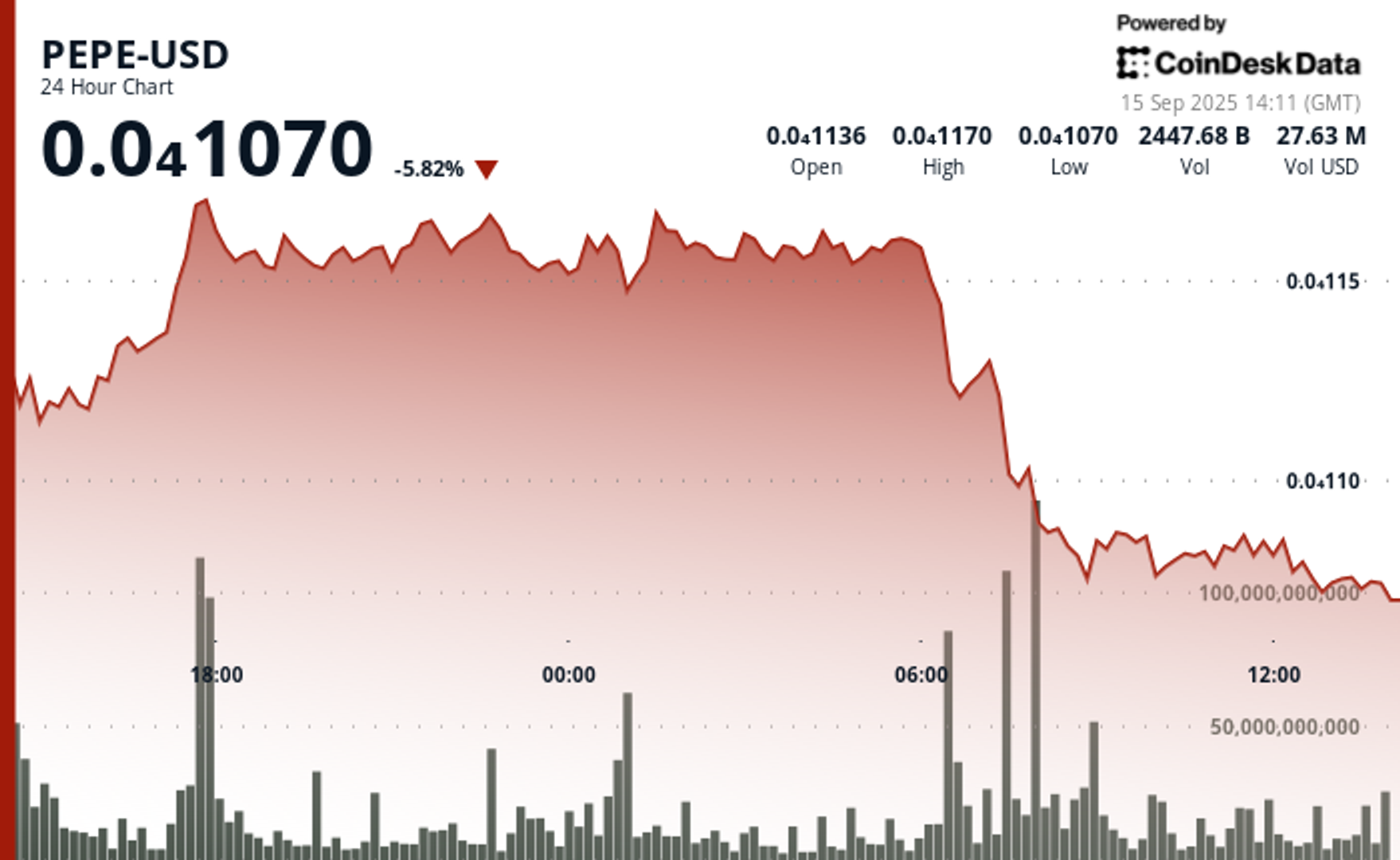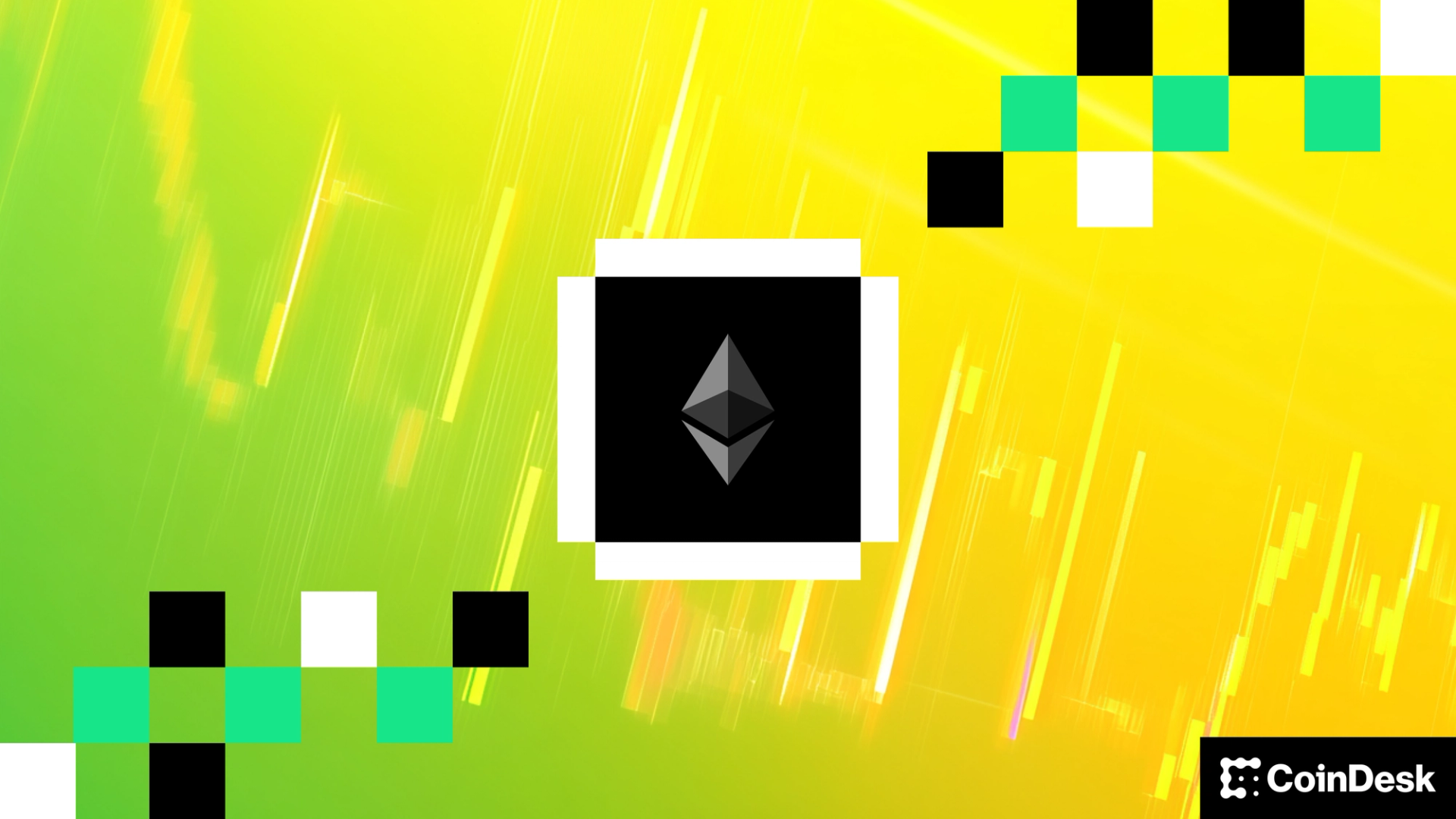Uncategorized
The Protocol: Can Based Rollups Solve Ethereum’s Layer-2 Problem?

Welcome to The Protocol, CoinDesk’s weekly wrap-up of the most important stories in cryptocurrency tech development. I’m Ben Schiller, CoinDesk’s Opinion and Features editor.
In this issue:
Can Based Rollups solve Ethereum’s problem?
Lido goes modular
Uniswap finally unveils Unichain
Ethereum’s Pectra upgrade is coming
Network news
BASED ROLLUPS TO THE RESCUE: In recent years, Ethereum has embraced a layer-2 scaling roadmap—a plan that encouraged the development of third-party auxiliary networks called «layer-2 rollups»—to help scale the base Ethereum ecosystem. Offloading activity to these upstart networks has helped bring down fees and improve speeds for end-users, but it has led to a massive, deeply fragmented ecosystem of layer 2s. But while layer-2 networks all post data back down to Ethereum, they often struggle to communicate directly with one another, meaning passing assets and data between them can become expensive and cumbersome. There’s also the risk of centralized sequencers: reliance on company-controlled black boxes to pass transaction data between blockchain layers. As a result, some Ethereum developers are pushing rollup tech that takes a new approach to security and interoperability: “based rollups.» Based rollups differ from most existing rollups because they shift execution duties—such as processing transactions—back to Ethereum’s layer-1 rather than handling them on a separate layer-2 network. When someone transacts on a layer-2 rollup, their transaction is processed through a component called a “sequencer.” The sequencer batches multiple transactions and submits them to Ethereum for settlement. While sequencers provide efficiency and generate revenue for rollup operators by strategically ordering transactions, they also introduce a single point of failure. Based rollups avoid this vulnerability by using Ethereum’s built-in sequencing—its massive community of validators—rather than a single centralized sequencer. Rollups like Optimism, Arbitrum, Base, zkSync, and Blast have quickly grown to support larger transaction volumes than Ethereum itself. According to L2Beat, there are currently 140 live layer-2 networks, but the experience of operating between them—passing assets and other data between networks—has become clunky. As Ethereum becomes bigger and layer-2 networks become more integral to its functioning, improving communication between layer-2s—in other words, improving «composability»—has become more important than ever. — Margaux Nijkerk Read more.
LIDO GOES MODULAR: The developers behind Lido, the largest staking service on Ethereum, have proposed revamping the staking platform with modular «vaults.» The new framework would introduce stVaults, a customizable component designed to help Lido accommodate institutions and more complex staking strategies. Lido currently allows investors to pool their ether (ETH) together and «stake» their crypto — locking up their tokens with the network, helping to secure it in exchange for interest. Lido pioneered liquid staking: users get a receipt on their deposits called Lido staked ETH (stETH) that they can trade at any time. With liquid staking on Lido, entering and exiting staking positions became as simple as buying and selling stETH tokens. Lido V3’s stVaults are “modular smart contracts designed to meet the diverse and evolving needs of Ethereum participants,” according to a press release shared with CoinDesk. The upgrade would enable staking setups beyond cut-and-dry liquid staking. Specifically, stVaults will be able to help institutional stakers who want to personalize their staking setups, node operators who want to attract high-volume stakers, and asset managers who want to create new staking use cases. “What is important to understand with customizable infrastructure, is that you can in general build even more complex products,” said Konstantin Lomashuk, the founder of the Lido staking protocol. — Margaux Nijkerk Read more.
UNICHAIN FINALLY: Uniswap Labs, the primary developer behind one of the largest decentralized exchanges (DEX), Uniswap, shared Feb 13 that its long-awaited layer-2 network, Unichain, is now live. Powered by Optimism’s OP stack, Unichain—like other layer-2s on Ethereum—offers faster and cheaper transactions compared to Ethereum’s mainnet. Developers can deploy apps onto the network, which has been optimized specifically for decentralized finance (DeFi) and aims to serve as «the home for liquidity across chains,» according to Uniswap Labs. For Uniswap Labs, the benefit of launching a layer-2 is twofold: it will provide a better experience for users of Uniswap and similar platforms, and it will create a new revenue opportunity in the form of network fees. A representative for Uniswap Labs told CoinDesk that «around 20%» of the chain’s revenue will go directly to the company. Unichain has been in testing since October 2024 and is classified by Uniswap Labs as a «stage-1» rollup, meaning it has elements of decentralization but retains some centrally-controlled safeguards at this early phase. The network is built on the OP Stack, a modular framework that lets developers build interoperable layer-2 chains based on Optimism’s optimistic rollup technology. Several well-known teams have come out with their own OP Stack-based layer-2’s, including Coinbase’s ‘Base’, Kraken’s ‘Ink,’ World’s ‘World chain,’ and Sony’s ‘Soneium.’ “We are anticipating a world of many, many different use cases, of which trading is a small subset,” Adams told CoinDesk in an interview. In collaboration with Ethereum research and development firm Flashbots, the Uniswap team said it has created a Trusted Execution Environment (TEE) on Unichain, a secure area for more sensitive transactions and is meant to optimize the chain for DeFi by allowing for more advanced trades and faster transaction finality. — Margaux Nijkerk Read more.
PECTRA IN APRIL: Ethereum developers have officially set test dates for Pectra, the network’s first upgrade in 11 months, putting it on track for a potential April release date. Pectra will contain an array of improvements — with a special focus on wallets and validators — but it comes at a period of heightened scrutiny for Ethereum, which has recently faced pressure from its community to refocus and catch up with competitors. Ethereum’s core builders decided on Thursday during their bi-weekly «All Core Developers» call to begin testing Pectra on Feb. 26 on the Holesky testnet, with a follow-up test on the network’s Sepolia testnet slated for Mar. 5. Should those tests succeed, the developers will reconvene on Mar. 6 to determine when to launch the upgrade officially. According to Tim Beiko, the protocol support lead at the Ethereum Foundation, developers expect the upgrade to hit mainnet in early April. Pectra — a portmanteau representing two separate upgrades, Prague and Electra — includes eight major improvements to the second-largest blockchain. Among the most-anticipated is EIP-7702, which is supposed to improve the user experience of crypto wallets. The Ethereum community has been facing an identity crisis over the last few weeks. Its native token, ether (ETH), is underperforming against other cryptocurrencies, and competitor networks like Solana have drawn attention and talent from the Ethereum ecosystem — the first-ever programmable blockchain and still the most trafficked. Amid the controversy — much of it directed at the Etheruem Foundation, which coordinates chain upgrades and is currently undergoing a major leadership shuffle — developers are hoping that Pectra will help put the network on steadier footing. — Margaux Nijkerk Read more.
Money Center
El Salvador Dispatch
Berlín, a city of 20,000 people, is home to El Salvador’s second Bitcoin circular economy. “Bitcoin City already exists. It’s called Berlín,” said one resident. Tom Carreras reports.
LinksDAO Launches on Base
LinksDAO began by selling NFTs, but the market has moved on in the time since.
Regulatory and policy
Hester Peirce, head of the SEC’s new crypto taskforce, says that memecoins likely to fall outside the regulator’s jurisdiction.
Calendar
Feb. 19-20, 2025: ConsensusHK, Hong Kong.
Feb. 23-24: NFT Paris
Feb 23-March 2: ETHDenver
March 18-19: Digital Asset Summit, London
May 14-16: Consensus, Toronto.
May 27-29: Bitcoin 2025, Las Vegas.
Uncategorized
PEPE Price Sinks 6% Amid Market Sell-Off as Whales Accumulate

Meme-inspired cryptocurrency PEPE has lost nearly 6% of its value in the last 24-hour period, sliding to a $0.0000107 low even as large investors accumulate.
Trading volumes for the cryptocurrency surged into the trillions of tokens amid the drop, as the token kept failing to find support amid the intense selling pressure. The drop came amid a wider crypto market drawdown, where the broader CoinDesk 20 (CD20) index lost 1.8% of its value.
Memecoins were especially hard hit in the sell-off. The CoinDesk Memecoin Index (CDMEME) dropped nearly 5% over the last 24 hours, while bitcoin saw a drop of 0.8%.
The drop comes just days after altcoin season speculation grew among cryptocurrency circles over the Federal Reserve’s expected interest rate cut later this week, which is expected to be a boon for risk assets.
Data from Nansen shows that over the past week, the top 100 non-exchange addresses holding PEPE on the Ethereum network have seen their holdings grow by 1.38% to 307.33 trillion tokens, while exchange wallets had a 1.45% drop in holdings to 254.4 trillion tokens.
Technical Analysis Overview
PEPE’s price action pointed to a market in retreat, according to CoinDesk Research’s technical analysis data model. The token dropped from $0.000011484 to $0.000010782, with sellers dominating the chart.
Price peaked at $0.000011732 during a resistance test, but volume swelled to 5.5 trillion tokens at that level, before the market ultimately turned lower.
Support showed signs of buckling during the next phase, with the token brushing against $0.000010746. Trading activity intensified again, hitting 7.7 trillion tokens and reinforcing bearish sentiment.
The cryptocurrency’s price whipsawed within a 9% intraday range, a sign that traders remain unsure whether support levels are going to hold.
Disclaimer: Parts of this article were generated with the assistance from AI tools and reviewed by our editorial team to ensure accuracy and adherence to our standards. For more information, see CoinDesk’s full AI Policy.
Uncategorized
Ether Bigger Beneficiary of Digital Asset Treasuries Than Bitcoin or Solana: StanChart

Digital asset treasuries (DATs), publicly traded firms that hold crypto on their balance sheets, have been hit hard in recent weeks as their market NAVs (mNAVs) slid below 1, Standard Chartered’s Geoff Kendrick said in a new report.
Looking ahead, ether (ETH) DATs appear to have the most staying power thanks to staking yield, regulatory clarity, and room to grow, argued Kendrick.
The mNAV ratio is crucial. When it falls, these firms lose the incentive (and sometimes the ability) to keep buying crypto, threatening a key source of demand for bitcoin (BTC), ether and solana (solana).
Kendrick said that the next phase for DATs will be one of differentiation. The winners will be those that can raise funds at the lowest cost, achieve scale that draws liquidity and investor attention, and, crucially, earn staking yield. That last point tilts the playing field toward ether and solana treasuries over bitcoin, which lacks yield.
Market saturation is also at play. Strategy’s success as the flagship BTC treasury has inspired a flood of copycats, nearly 90 at last count, who together now hold more than 150,000 BTC, up sixfold this year, the analyst noted.
But if mNAVs stay below 1, Standard Chartered expects consolidation. For BTC treasuries, that could mean firms like Saylor’s Strategy buying out rivals rather than buying new bitcoin on the open market, a coin rotation, not fresh demand.
Ether treasuries look better positioned. They have been aggressively accumulating, with 3.1% of ETH’s circulating supply purchased since June. The largest player, Bitmine (BMNR) is well-placed to keep adding to its 2 million ETH stack, the report said.
For crypto markets, this matters. DAT buying has been a key driver of bitcoin and ether prices in 2025. But with BTC treasuries facing consolidation pressure and solana treasuries still relatively small, Standard Chartered sees ETH as the likely beneficiary going forward.
Read more: Strategy’s S&P 500 Snub Is a Cautionary Signal for Corporate Bitcoin Treasuries: JPMorgan
Uncategorized
Ethereum Foundation Starts New AI Team to Support Agentic Payments

The Ethereum Foundation (EF) is creating a dedicated artificial intelligence (AI) group to make Ethereum the settlement and coordination layer for what it calls the “machine economy,” according to research scientist Davide Crapis.
Crapis, who announced the initiative Monday on X, said the new dAI Team will pursue two priorities: enabling AI agents to pay and coordinate without intermediaries, and building a decentralized AI stack that avoids reliance on a small number of large companies. He said Ethereum’s neutrality, verifiability and censorship resistance make it a natural base layer for intelligent systems.
Ethereum Foundation background
The EF is a non-profit organization based in Zug, Switzerland, that funds and coordinates the development of the Ethereum blockchain. It does not control the network but plays a catalytic role by supporting researchers, developers and ecosystem projects.
Its remit includes funding upgrades such as Ethereum 2.0, zero-knowledge proofs and layer-2 scaling, alongside community programs like the Ecosystem Support Program. The foundation also organizes events such as Devcon to foster collaboration and acts as a policy advocate for blockchain adoption.
In 2025, EF restructured to handle Ethereum’s growth, emphasizing ecosystem acceleration, founder support and enterprise outreach. The new dAI Team represents a continuation of this shift toward specialized units addressing emerging technologies.
Crapis’s role
Crapis is a research scientist at the EF and will lead the new dAI Team. He said the group will connect its work with both the EF’s protocol group and its ecosystem support arm.
“Ethereum makes AI more trustworthy, and AI makes Ethereum more useful,” he wrote, adding that the team intends to fund public goods and projects at the intersection of AI and blockchains.
ERC-8004 and Trust Standards
The group will build on recent work around ERC-8004, a proposed Ethereum standard that Crapis described as a way to prove who an AI agent is and whether it can be trusted. By offering identity and reputation systems for autonomous agents, the standard is intended to allow coordination without centralized gatekeepers.
Crapis said the team will support new standards and upgrades as they emerge, guided by Ethereum’s values and the “d/acc” philosophy of decentralized acceleration. The goal, he explained, is to ensure AI development remains open and verifiable while giving humans greater agency over how intelligent systems interact with the economy.
Why it matters
For Ethereum, the move signals a growing ambition to anchor emerging technologies beyond finance.
If AI agents begin transacting at scale, demand could grow for settlement rails, reputation systems and standards that run natively on Ethereum. For the AI community, the initiative offers an alternative to centralized platforms that currently dominate AI infrastructure.
“The more intelligent agents transact, the more they need a neutral base layer for value and reputation,” Crapis said. “Ethereum benefits by becoming that layer and AI benefits by escaping lock-in to a few centralized platforms.”
The team has begun hiring and publishing resources, according to Crapis. He said EF intends to work “with purpose and urgency” to connect AI developers with the Ethereum ecosystem and to accelerate research at the boundary of the two fields.
-

 Business11 месяцев ago
Business11 месяцев ago3 Ways to make your business presentation more relatable
-

 Fashion11 месяцев ago
Fashion11 месяцев agoAccording to Dior Couture, this taboo fashion accessory is back
-

 Entertainment11 месяцев ago
Entertainment11 месяцев ago10 Artists who retired from music and made a comeback
-

 Entertainment11 месяцев ago
Entertainment11 месяцев ago\’Better Call Saul\’ has been renewed for a fourth season
-

 Entertainment11 месяцев ago
Entertainment11 месяцев agoNew Season 8 Walking Dead trailer flashes forward in time
-

 Business11 месяцев ago
Business11 месяцев ago15 Habits that could be hurting your business relationships
-

 Entertainment11 месяцев ago
Entertainment11 месяцев agoMeet Superman\’s grandfather in new trailer for Krypton
-

 Entertainment11 месяцев ago
Entertainment11 месяцев agoDisney\’s live-action Aladdin finally finds its stars





